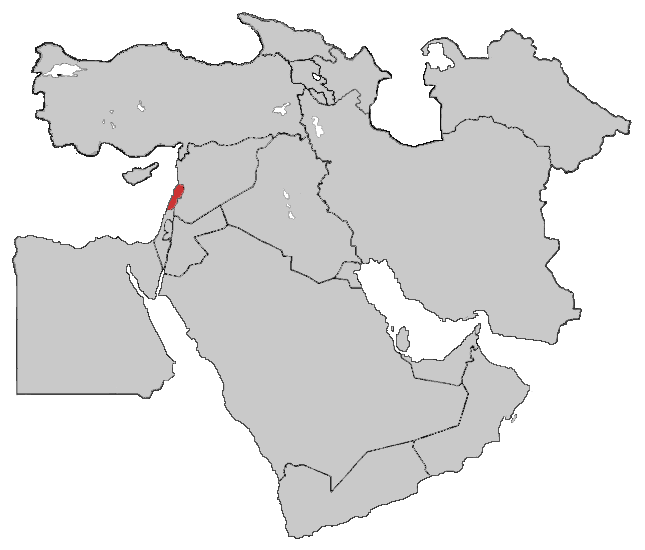


Lebanon's location at the crossroads of the Mediterranean Basin and the Arabian hinterland facilitated its rich history and shaped a cultural identity of religious and ethnic diversity. Lebanon gained independence in 1943, establishing confessionalism, a unique, Consociationalism-type of political system with a power-sharing mechanism based on religious communities. Bechara El Khoury, President of Lebanon during the independence, Riad El-Solh, first Lebanese prime minister and Emir Majid Arslan II, first Lebanese minister of defence, are considered the founders of the modern Republic of Lebanon
Languages: Arabic (official), French, English, Armenian
Ethnic Groups: Arab 95%, Armenian 4%, other 1%
Belief Systems: Muslim 59.7% (Shi'a, Sunni, Druze, Isma'ilite, Alawite or Nusayri), Christian 39% (Maronite Catholic, Greek Orthodox, Melkite Catholic, Armenian Orthodox, Syrian Catholic, Armenian Catholic, Syrian Orthodox, Roman Catholic, Chaldean, Assyrian, Copt, Protestant), other 1.3%
Demographics:
Population: 4.36 million people (World Rank: 126th) (2014 estimate)
Population Density: 1097 people/mi^2 (People per Square Mile) (World Rank: 29th) (2014 estimate)
Population Growth: 0.754 %/yr (World Rank: 148th) (2013 estimate)
Life Expectancy: 80 years (World Rank: 37th) (2013 estimate)
Median Age: 28.5 years (World Rank: 85th) (2010 estimate)
Sites for More Information:
Map of Lebanon
Worldatlas.com
Country Profile for Lebanon
United Nations
Lebanon - Country Profile
U.S. Library of Congress
Lebanon - General Information
Encyclopedia.com
Tourism:
Travel Info for Lebanon
Travelnotes.org
Dangers of Traveling to Lebanon
More Traveling information on Lebanon
Government Related:
Lebanese Embassy
in Washington D.C.
Lebanese Government Web Sites
by Gunnar Anzinger

